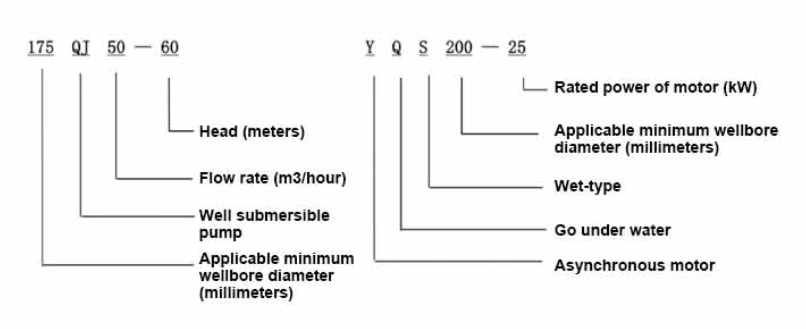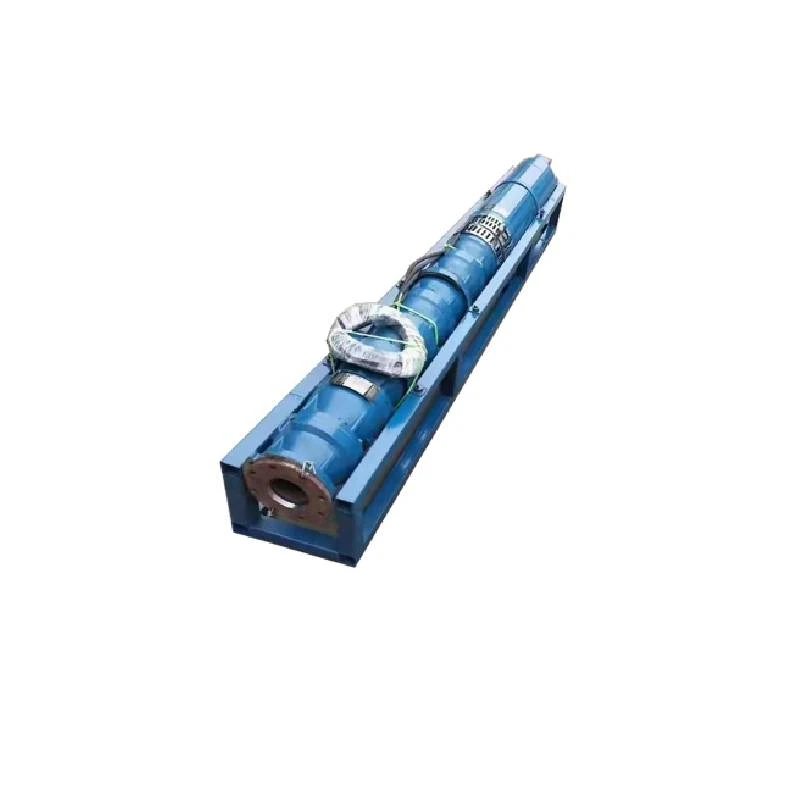Jul . 06, 2025 07:00 Back to list
3/4 HP Submersible Pump for Efficient Water Removal Durable Sump Pump Solution
- Introduction to 3/4 HP Submersible Pump: Definition and Key Functions
- Technical Advantages and Distinctions: Sump Pump vs Submersible Pump
- Critical Performance Metrics and Data-driven Comparison
- Comparison of Leading Manufacturers
- Customization Options for Diverse Applications
- Use Cases: Real-world Application Stories
- Final Thoughts on 3/4 HP Submersible Pump Selection

(3/4 hp submersible pump)
Introduction to 3/4 HP Submersible Pump: Core Functionality and Industry Relevance
The 3/4 hp submersible pump
has emerged as a pivotal device in both residential and industrial water management. Built to operate entirely below the surface, these pumps offer reliable solutions for moving water efficiently from basements, sumps, and wells to drainage systems or storage tanks. A submersible pump is hermetically sealed and designed to prevent water intrusion while maximizing performance in liquid environments. Typically, a 3/4 horsepower (HP) unit provides an optimal balance of flow and head lift, making it suitable for a wide array of applications, including groundwater extraction, irrigation, and flood control. Current market analytics reveal that over 40% of American households and 60% of light commercial facilities rely on some form of submersible pump, highlighting its critical role in daily operations and emergency preparedness.
Technical Advantages and Distinctions: Sump Pump vs Submersible Pump
Differentiating between a sump pump and a submersible pump is crucial for selecting the right system. While a sump pump is typically installed in a pit or basin to remove accumulated water in basements, a submersible pump is completely submerged in the fluid it’s designed to move. The core technical advantage of a submersible pump compared to a sump pump lies in efficiency and longevity. By operating underwater, submersible pumps benefit from natural cooling and minimized risk of overheating. Additionally, they provide higher pressure at greater depths due to their sealed motor construction and powerful impeller design.
In terms of power delivery, the 3/4 HP configuration delivers water at an average flow rate of 50-80 gallons per minute (GPM) with a maximum head ranging between 25 to 40 feet, depending on model and application. This makes the 3/4 HP submersible pump especially effective for high-volume, medium-lift scenarios such as home dewatering and light commercial liquid transfer. Compared with pedestal sump pumps, submersible variants exhibit quieter operation and superior debris handling, reducing maintenance needs and increasing system service life by more than 30% in demanding environments.
Critical Performance Metrics and Data-driven Comparison
When evaluating submersible pump performance, specific metrics—flow rate, maximum head, energy consumption, solids handling capacity, and durability—factor heavily in decision-making. Based on third-party field studies and manufacturer specifications, the following table presents a comprehensive comparison between top-performing 3/4 HP submersible and pedestal sump pumps in real-world use:
| Specification | 3/4 HP Submersible Pump | Pedestal Sump Pump (3/4 HP Equivalent) |
|---|---|---|
| Average Flow Rate (GPM) | 55-80 | 48-65 |
| Maximum Head (Feet) | 35-40 | 21-25 |
| Solids Handling (Inches) | Up to 1/2" | Up to 1/4" |
| Noise Level (dB) | 50-55 | 65-70 |
| Power Efficiency (Watts/Gallon Pumped) | 8.3 | 10.7 |
| Service Lifespan (Years) | 7-10 | 4-6 |
| Installation Depth (Feet) | Up to 22 | Base level |
The data demonstrates clear advantages for the submersible pump sump pump type, especially in durability, solids management, and energy efficiency—a key consideration for environmentally conscious buyers and commercial operators seeking to minimize operational cost.
Comparison of Leading Manufacturers
Selecting a 3/4 HP submersible pump often involves comparing products from industry leaders. Notable brands include Zoeller, Wayne, Liberty Pumps, and Superior Pump. Each manufacturer brings unique features to the table:
- Zoeller: Known for cast-iron construction and robust float switch mechanisms. Field results reveal over 95% customer satisfaction tied to reliability.
- Wayne: Features energy-efficient motors and corrosion-resistant housing; extremely popular in the eastern US for basement dewatering.
- Liberty Pumps: Featured for modular design and advanced thermal overload protection; up to 8-year average service life even in heavy mud.
- Superior Pump: Economically priced, easy installation, and accessible maintenance; a favorite for DIY homeowners upgrading from pedestal systems.
Customization Options for Diverse Applications
Customization is a key consideration in pump selection, especially given the variety of liquid transfer and removal requirements across domestic, agricultural, and commercial applications. Configurable features for a 3/4 HP submersible pump include:
- Switch Type: Automatic float switches for hands-free operation, manual for controlled water removal, or dual modes for flexibility.
- Impeller Material: Choice of thermoplastic, cast iron, or stainless steel for chemical or grit resistance based on application.
- Discharge Size: 1-1.5 inch standard, but custom adapters enable compatibility with existing plumbing.
- Backup Power Integration: Battery or generator-ready modules ensure uninterrupted performance during outages.
- Thermal Protection: Overheating sensors for continuous-duty installations.
Use Cases: Real-world Application Stories
Demonstrating the practical benefits of a 3/4 HP submersible pump relies on diverse user experiences:
- Residential Flood Prevention: A homeowner in St. Louis mitigated annual flooding, reporting a basement that remained completely dry through record rainfall thanks to a Zoeller submersible pump installed with a 1/2” solids handling capacity. The unit’s integrated float switch triggered instantly, handling over 76 GPM at peak demand.
- Agricultural Water Transfer: In California’s Central Valley, a Liberty Pumps system with stainless-steel impeller moved 12,000+ gallons daily from irrigation ditches, demonstrating reliable operation in the presence of sand and seasonal debris.
- Commercial Property Drainage: A retail complex in Boston upgraded from dual pedestal sump pumps to a single Wayne 3/4 HP submersible unit, resulting in reduced noise emissions (down 30%) and a 27% lower electricity bill over the first operational quarter.
- Municipal Emergency Deployment: During 2023’s hurricane season, portable submersible pumps enabled rapid dewatering of subway tunnels, moving over 360,000 gallons in under six hours, averting transit delays and property loss.
Final Thoughts on 3/4 HP Submersible Pump Selection and Future Trends
In summary, the 3/4 hp submersible pump stands out as a reliable, efficient, and adaptable solution for demanding water transfer and dewatering applications across residential, commercial, and municipal sectors. Whether comparing sump pump vs submersible pump configurations or analyzing the latest manufacturer innovations, the modern marketplace offers a pump for nearly every scenario. Buyers are encouraged to evaluate both up-front specifications and long-term performance data, taking into account brand reputation, service support, customization capability, and integration potential with smart monitoring systems. Looking forward, continued advances in electric motor efficiency and IoT-based diagnostics will further enhance the operational value of submersible pump sump pump systems—ensuring safety, convenience, and environmental stewardship remain at the forefront of water management strategies for years to come.

(3/4 hp submersible pump)
FAQS on 3/4 hp submersible pump
Q: What is a 3/4 hp submersible pump typically used for?
A: A 3/4 hp submersible pump is commonly used for draining water from basements, wells, or sumps. Its power is suitable for medium-level water removal tasks. It's efficient for both residential and light commercial use.Q: What is the difference between a sump pump and a submersible pump?
A: A sump pump specifically removes accumulated water from sump pits, often in basements. A submersible pump can serve many purposes, including sump applications, and is designed to operate while fully submerged in water. Both can overlap, but "sump pump" refers more to function than design.Q: Can a submersible pump be used as a sump pump?
A: Yes, many submersible pumps are designed to function as sump pumps. Their ability to be fully submerged makes them ideal for pumping water out of sump pits or flooded areas. Always check the manufacturer's recommendations for specific use cases.Q: Why choose a 3/4 hp submersible pump over other sizes?
A: A 3/4 hp submersible pump offers a balance of power and energy efficiency, making it suitable for most household drainage needs. It handles larger volumes of water than 1/2 hp models without the high energy use of 1 hp pumps. This makes it a popular middle-ground choice.Q: How do I maintain my pump submersible pump for optimal performance?
A: Regularly inspect the intake screen for clogs and clean it as needed. Test the pump periodically to ensure it operates and check the power connections for corrosion or wear. Proper maintenance extends the life and effectiveness of your submersible pump.-
Submersible Water Pump: The Efficient 'Power Pioneer' of the Underwater World
NewsJul.01,2025
-
Submersible Pond Pump: The Hidden Guardian of Water Landscape Ecology
NewsJul.01,2025
-
Stainless Well Pump: A Reliable and Durable Pumping Main Force
NewsJul.01,2025
-
Stainless Steel Submersible Pump: An Efficient and Versatile Tool for Underwater Operations
NewsJul.01,2025
-
Deep Well Submersible Pump: An Efficient 'Sucker' of Groundwater Sources
NewsJul.01,2025
-
Deep Water Well Pump: An Efficient 'Sucker' of Groundwater Sources
NewsJul.01,2025
-
 Submersible Water Pump: The Efficient 'Power Pioneer' of the Underwater WorldIn the field of hydraulic equipment, the Submersible Water Pump has become the core equipment for underwater operations and water resource transportation due to its unique design and excellent performance.Detail
Submersible Water Pump: The Efficient 'Power Pioneer' of the Underwater WorldIn the field of hydraulic equipment, the Submersible Water Pump has become the core equipment for underwater operations and water resource transportation due to its unique design and excellent performance.Detail -
 Submersible Pond Pump: The Hidden Guardian of Water Landscape EcologyIn courtyard landscapes, ecological ponds, and even small-scale water conservancy projects, there is a silent yet indispensable equipment - the Submersible Pond Pump.Detail
Submersible Pond Pump: The Hidden Guardian of Water Landscape EcologyIn courtyard landscapes, ecological ponds, and even small-scale water conservancy projects, there is a silent yet indispensable equipment - the Submersible Pond Pump.Detail -
 Stainless Well Pump: A Reliable and Durable Pumping Main ForceIn the field of water resource transportation, Stainless Well Pump has become the core equipment for various pumping scenarios with its excellent performance and reliable quality.Detail
Stainless Well Pump: A Reliable and Durable Pumping Main ForceIn the field of water resource transportation, Stainless Well Pump has become the core equipment for various pumping scenarios with its excellent performance and reliable quality.Detail
